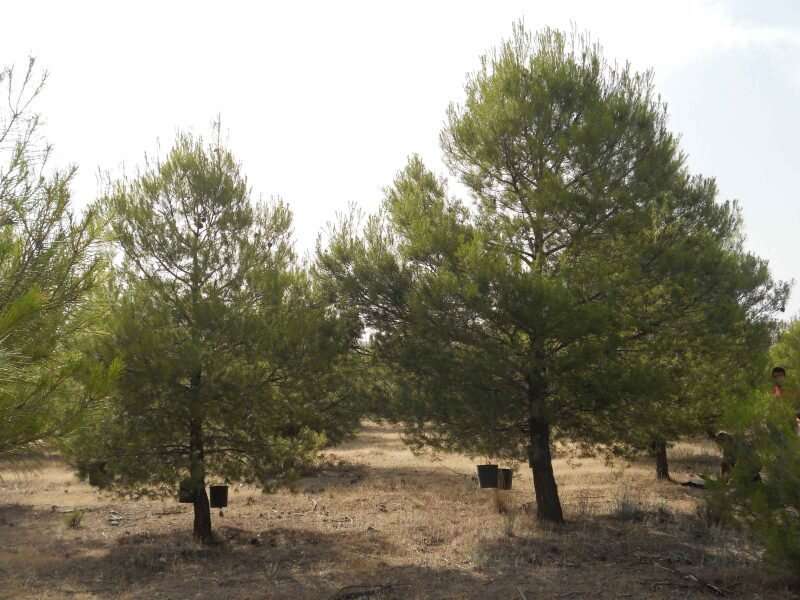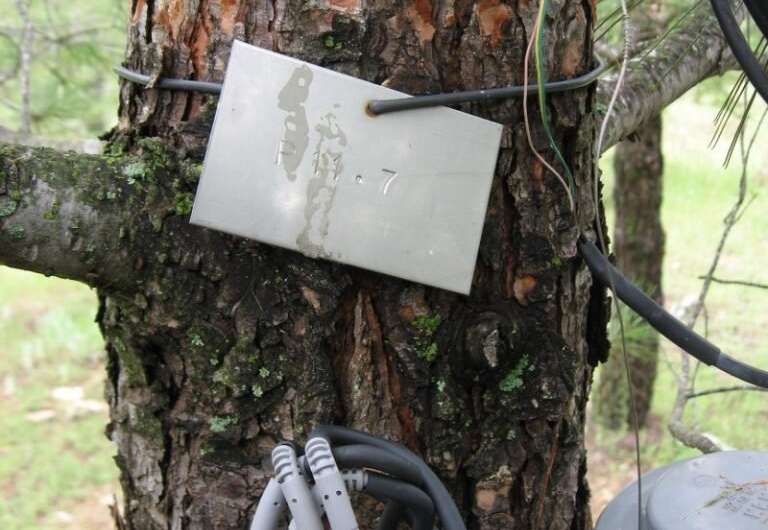New forest treatment helps trees adapt better to climatic change

Researchers from the University of Granada, the Andalusian Institute of Agricultural Research and Training, Fishing, Food and Organic Production (IFAPA), and the Pyrenean Institute of Ecology of the Spanish National Research Council (CSIC) have verified that the thinning technique is effective as an alternative approach in the recovery and maintenance of forest ecosystems dealing with extreme climates. The thinning method consists of reducing the number of trees in a given area, so that those remaining are able to access more resources.
The researchers validated this technique using a novel method based on taking high-resolution measurements in the variations of the diameters of tree trunks. The method contributes to a better understanding of the short-term relationships between climatic changes and tree stem growth. To date, the technique commonly used has been to measure the width of the trunk's rings, but this is ineffective for discerning growth over a short time scale.
Forest thinning consists of reducing the density of trees per hectare, to thus decrease the competition for available resources and improve the growth of the remaining trees, rendering them less vulnerable to water stress. The researchers have set out this technique in a recent paper entitled "Using stem diameter variations to detect and quantify growth and relationships with climatic variables on a gradient of thinned Aleppo pines" published in the journal Forest Ecology and Management. They position it as a viable alternative in the fight against climate change in certain Mediterranean areas, demonstrating that the growth of forests improves when there is less competition between individual trees.
These experts analysed the evolution of the trees over time. IFAPA researcher Francisco Bruno Navarro Reyes, co-author of the article, explains: "We have monitored the daily contractions and dilations of the trunks over the course of three years, to assess whether this technique triggers earlier growth in Spring and lengthens the period through to the autumn, effectively prolonging the period during which the trees develop."

Fewer pine trees, improved growth
The land where the experiment and observations were conducted—Cortijo del Conejo, Cortijo Albarrán and Cortijo Becerra, in Guadix, Province of Granada—belongs to the Ministry of Agriculture, Livestock, Fisheries and Sustainable Development, and was recently declared a critical area for research on management of the natural environment in south-eastern Spain. At these sites, records have been kept for over 20 years on the climatic variables of the area. By examining factors such as humidity and air temperature, radiation, or vapour-pressure deficit, the researchers determined how the management of such areas can affect the direct response between trees and climate.
The scope of the study covered 16 plots measuring 20m x 20m planted in 1995 with Pinus halepensis (Aleppo pine), to a density of about 1,500 per hectare, this species being among the most commonly found in the Mediterranean area. Ten years after the pines were planted, the researchers commenced the thinning process, controlling the relative degree of thinning in each plot and reducing the original density to 800, 400, and 250 trees per hectare, respectively.
The measurements were made using digital dendrometers, which very accurately record variations in trunk dimensions and provide precise information about secondary tree growth in relation to climatic variables and water stress. Using this technology, the experts successfully established the effects of these variables on the cumulative growth of the pines (measured daily, monthly, annually and in total) more accurately than with other methods used in the past, such as band dendrometers or tree ring analysis.
In addition, by means of mathematical and statistical analyses, the researchers were able to identify how individual tree-environment relationships operate, reflecting their adaptation to the change in density. In those treatments with a lower concentration of trees, the pines grew much better. Hence, the study has confirmed that, when competition for resources is reduced, development and growth are longer and more effective.
After five years of thinning, the dendrometers were installed in each plot to monitor secondary tree growth—the daily variation of the trunks, the accumulated growth, and the maximum daily contraction, as well as the number of days of actual development during a three-year period. This information, together with the correlation of climatic variables, revealed that trees in the plots subjected to the greatest thinning showed less vulnerability to drought, greater recovery capacity after drought, and improved climatic sensitivity. They also presented greater efficiency in the use of resources and, therefore, better adaptation to the environment and greater resilience to change.
More information: M.N. Jiménez et al, Using stem diameter variations to detect and quantify growth and relationships with climatic variables on a gradient of thinned Aleppo pines, Forest Ecology and Management (2019). DOI: 10.1016/j.foreco.2019.03.061
Journal information: Forest Ecology and Management
Provided by University of Granada


















